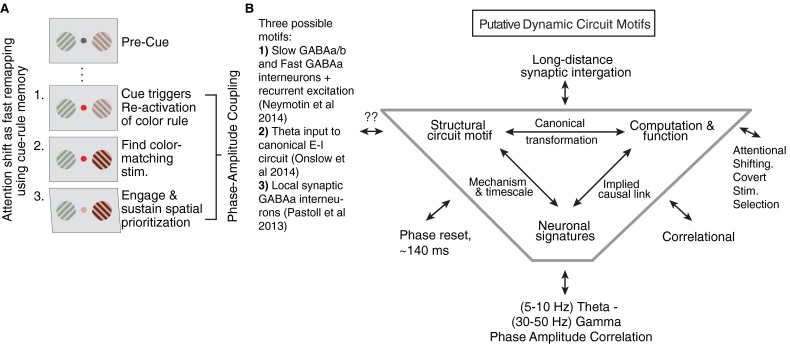Fig. S8.
Cue-triggered attention shifts during memory reactivation and remapping and hypothetical dynamic circuit motifs of theta–gamma P–A correlation. (A) Illustration of three separable component processes underlying the cue-triggered (covert) attention shift. The panel shows the succession from precue (top panel) to postcue period (bottom three panels). The panels show that attention shifting proceeds from (i) the reactivation of a color rule, (ii) applying the rule by finding the color matching peripheral stimulus and filtering out nonmatching stimuli, and (iii) engaging and sustaining stimulus selection. (B) The framework of the tripartite dynamic circuit motifs helps understand how an activation signature (theta–gamma P–A correlation) links to a function (attentional shifting and stimulus selection). Completion of a dynamic motif would require identification of the structural (cellular and synaptic) origin of the activation state. (For details, see ref. 11.) The shown putative motif makes it explicit that the link of theta–gamma P–A correlation and attentional prioritization is correlational. Moreover, we can only speculate which synaptic or cellular mechanisms implement theta–gamma P–A correlation, but outline three generic cortical circuits that are powerful candidates.

